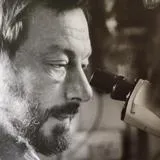
Professor Graham Dunn
Emeritus Professor of Cell Biophysics
Biography
Born in 1944, Graham did a PhD with Michael Abercrombie at UCL and a postdoc with Vernon Ingram at MIT. In 1971 he joined Abercrombie at the Strangeways Research Laboratory in Cambridge and studied the mechanism of contact guidance in fibroblasts. He constructed an interference reflection microscope with which he and Abercrombie published a description of focal contacts and their probable role as adhesions in living fibroblasts and with Julian Heath he published a widely cited description of the formation of focal contacts and their invariable association with actin-rich microfilament bundles.
In 1981, he joined the MRC Cell Biophysics Unit at KCL in Drury Lane. With Grenham Ireland, he devised a laminar flow apparatus to demonstrate that the so-called contact inhibition of mitosis in 3T3 cells in fact results from diffusion-limited access to growth factors. Using the lab's PDP11 computer, he and his postdocs Alistair Brown and Daniel Zicha pioneered the digital recording and analysis of cell growth and behaviour by adapting interference microscopes for phase stepping to plot the dry mass distribution in living cells. He also developed a new form of chemotaxis chamber with Zicha and Brown which enabled living cells to be studied at high resolution in linear, stable gradients of putative chemoattractants.
At New Hunt's House, Dunn and his postdocs Daniel Soong and Mark Holt together with Zicha's team at CRUK developed FLAP, a method of pseudo-photoactivation using actin conjugated with both CFP and YFP. By photobleaching only the YFP, image differencing could reveal the subsequent fate of the photobleached molecules and enabled the discovery of rapid monomeric actin flow in moving fibroblasts. With Brian Stramer's group, he applied the methods that he had developed for characterising cell locomotion to demonstrate that the development of cell pattern in the distribution of haemocytes in the Drosophila embryo is explained by contact inhibition of locomotion.
